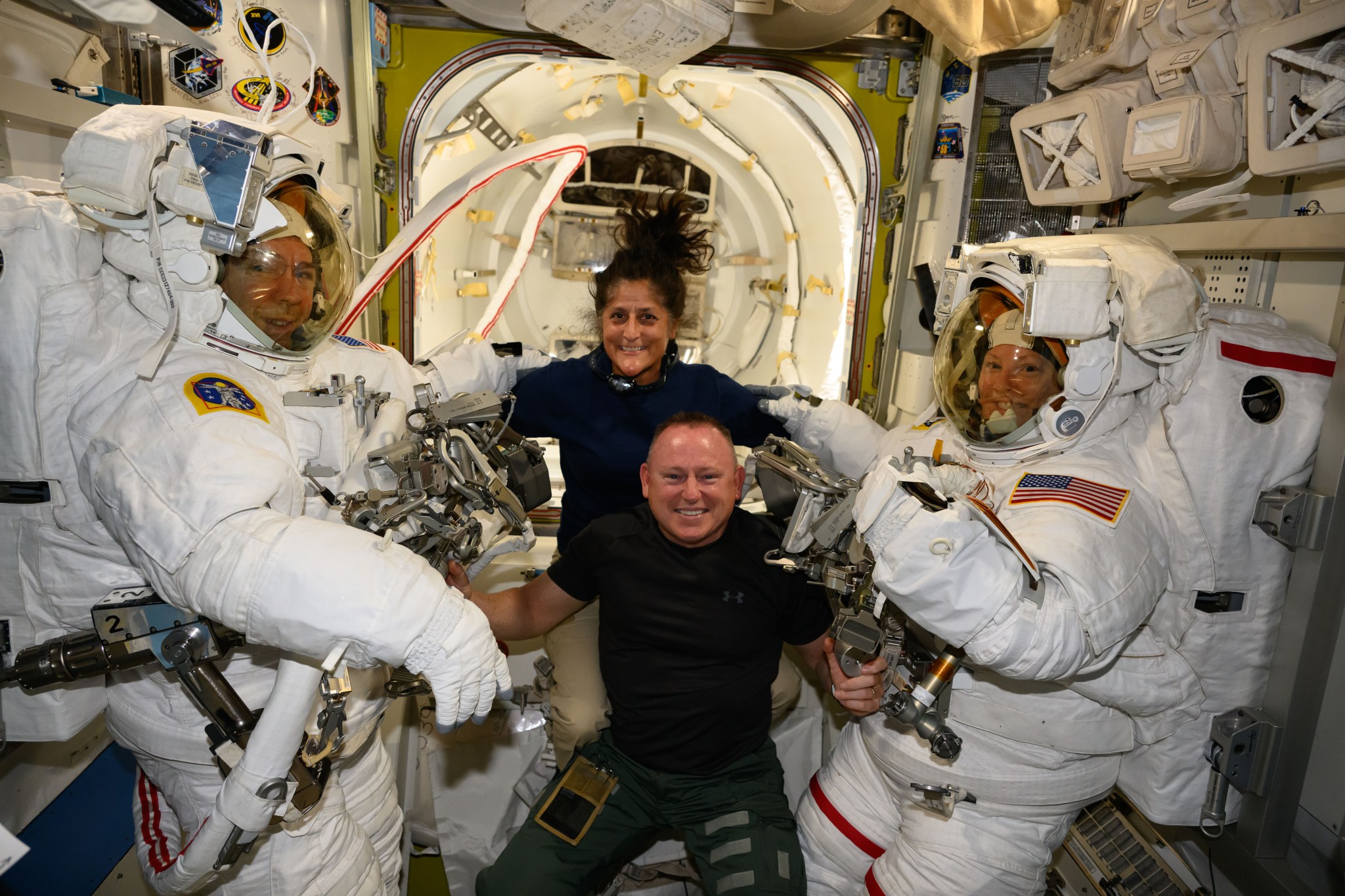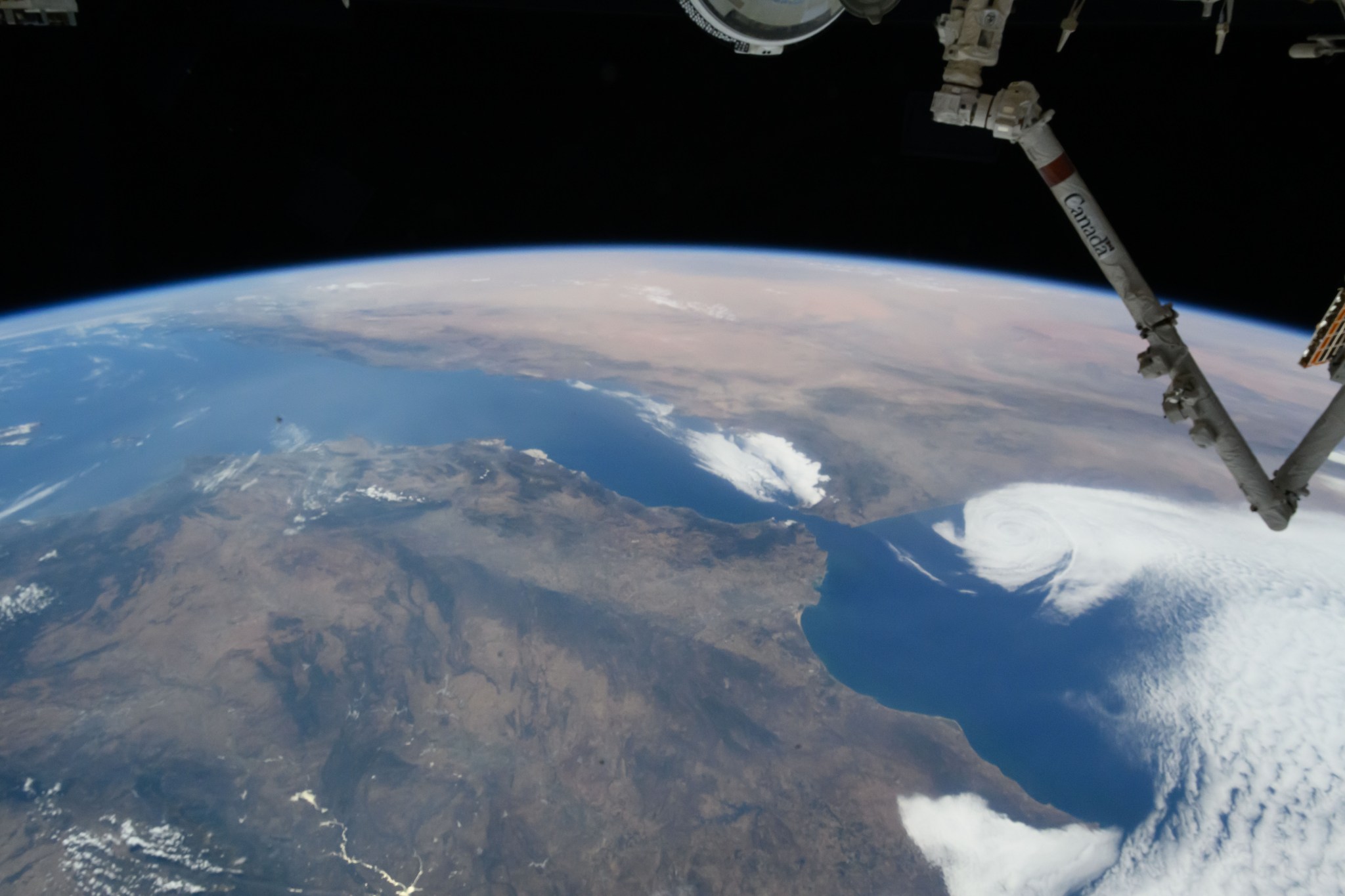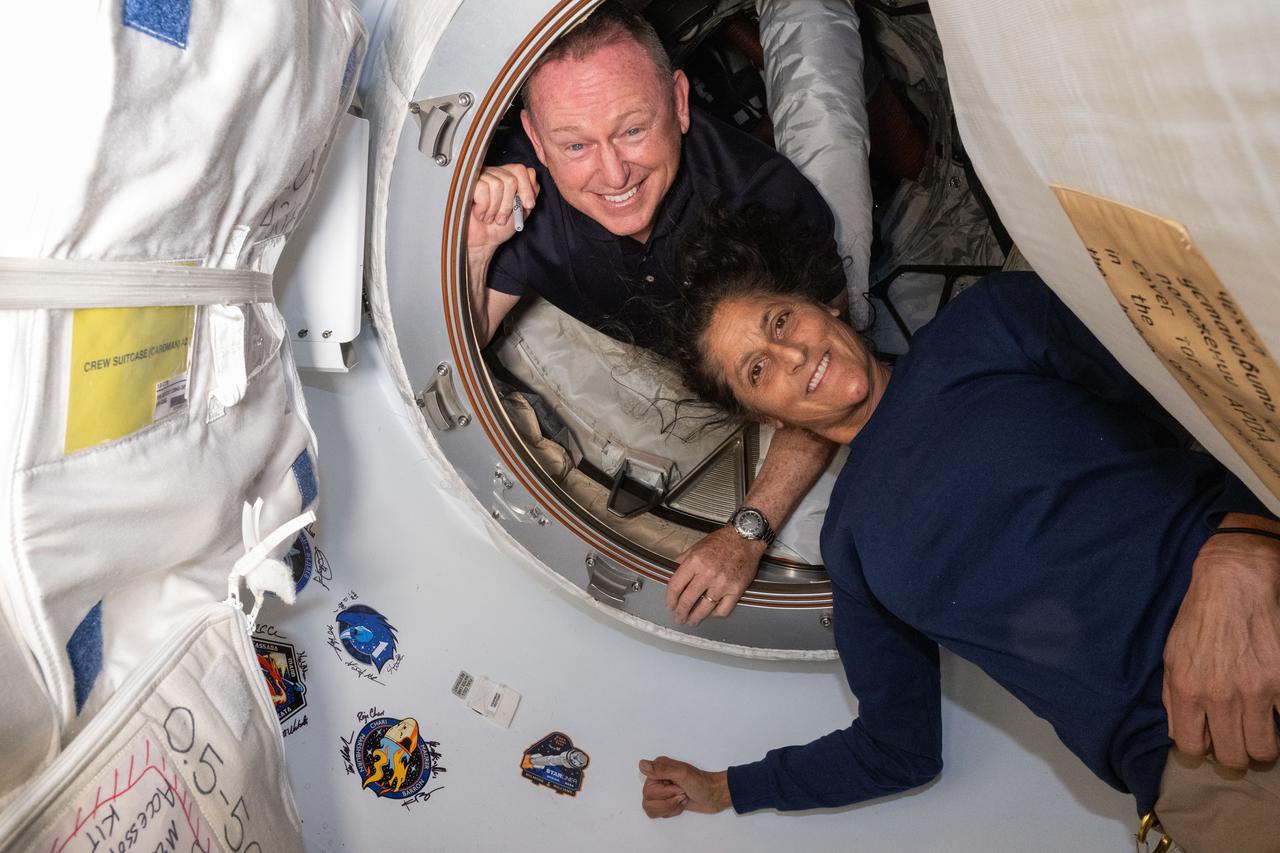9.08.2024
NASA says Boeing's Starliner astronauts may have to come home on different spacecraft
A proposed plan could keep them on the ISS until February 2025.
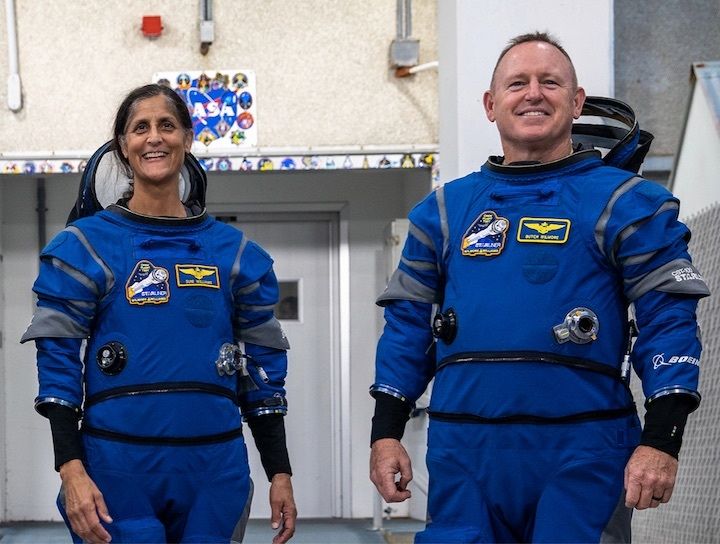
The two astronauts who went up to the International Space Station (ISS) on Boeing's Starliner may have to come home on a different spacecraft, NASA officials said during a press conference Wednesday.
Barry "Butch" Wilmore and Sunita "Suni" Williams, who performed the first crewed test flight of Starliner, have been in space for more than 60 days. When they launched on June 5, they were only supposed to be on the ISS for about a week.
Boeing and NASA officials have been resistant to exploring the option to bringing the crew home on another method but Kenneth Bowersox, NASA's associate administrator for space operations, said the team is considering it.
"We don't just have to bring a crew back on Starliner for example. We can bring them back on another vehicle," he said. "In the case that we have with the Starliner crew flight test, the option to either bring the crew home on Starliner or to bring the crew home on another vehicle, we could take either path."
Bowersox said there is currently more "consensus" needed among the team, but they are also getting "more serious about evaluating our other options."
Wilmore and Williams are "integrated" with the Expedition 71 crew aboard the ISS and Bowersox said that, although it's helpful to have extra hands onboard the station, they are using up more supplies meant for the ISS crew.
Steve Stich, program manager for NASA's Commercial Crew Program, said NASA is considering sending SpaceX's Dragon Crew-9, set to launch to the ISS in September, with only two of the four astronauts assigned to it.
The spacecraft would carry extra spacesuits for Wilmore and Williams. However, the two would remain on the ISS until February 2025, when Crew-9 is set to return to Earth. Stich said the proposed plan has not formally been approved yet.
"Our prime option is to return Butch and Suni on Starliner. However, we have done the requisite planning to make sure we have other options open," Stich said.
Stich added that Starliner does not currently have the ability to autonomously undock from the ISS. To do that, the Starliner software would need to be updated and the Boeing flight control team would need to undergo additional training.
In a statement to ABC News, Boeing said it was confident in Starliner's ability to bring the astronauts home.
"[Crew Flight Test] is currently a crewed mission, and we still believe in Starliner's capability and its flight rationale," the statement read. "If NASA decides to change the mission, we will take the actions necessary to configure Starliner for an uncrewed return."
Starliner is part of the largerCommercial Crew Programat NASA, which was testing if Boeing's spacecrafts could be certified to perform routine missions to and from the ISS.
Wilmore and Williams were originally scheduled to return on June 14 but have since had their return delayed multiple times.
Starliner has been plagued by issues even before launch. The flight test was originallytentatively scheduled for May 6, but was scrubbed after a problem with an oxygen valve on a rocket from United Launch Alliance (ULA), which manufactures and operates the rockets that launch spacecraft into orbit.
A new launch date had been set for May 25, but asmall helium leak was discovered in the service module, which contains support systems and instruments for operating a spacecraft.
Helium leaks and a thruster issue then threatened to delay Starliner's docking. Five days after docking at the ISS, NASA and Boeing said the spacecraft was experiencingfive "small" helium leaksand, at the time, said enough helium was available for the return mission.
Last month, teams at NASA's White Sands Test Facility in New Mexico performed ground tests of Starliner's thruster, putting it through similar conditions the spacecraft experienced on its way to the ISS, to see how it would react upon undocking.
Quelle: abcNews
----
Update: 16.08.2024
.
"I know everyone would like a date," NASA teams working to bring Starliner astronauts home
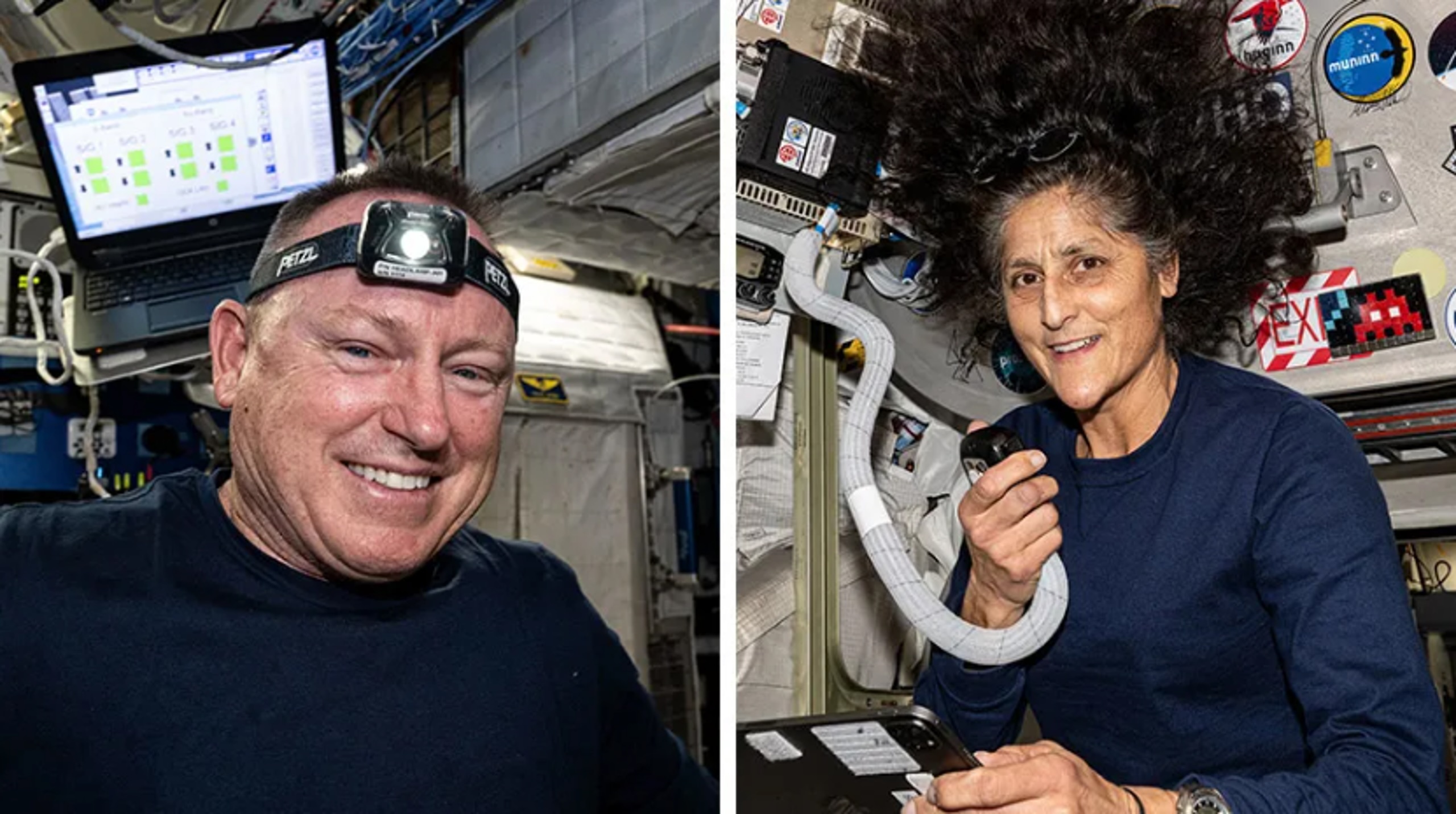
NASA astronauts Butch Wilmore and Sunita Williams continue to wait — like everyone else — for a decision by NASA on whether they can return home from the International Space Station on their troubled Starliner spacecraft.
An official decision will not come until late next week at the earliest. There is still a chance the astronauts − who have been onboard the outpost since June 6 − could return on the Boeing vehicle. But NASA is also weighing the option of having them join the upcoming Crew-9, which would then extend their stay in space and lead to a return on a SpaceX Dragon in February.
Originally, the crew was expecting an approximately weeklong mission after their June launch but soon problems arose that have kept them at the outpost as NASA has worked to understand whether Starliner can do the job of bringing them back.
"I know everyone would like a date," Ken Bowersox, associate administrator of NASA’s Space Operations Mission Directorate, told journalists during a media call Wednesday.
"We got time available before we bring Starliner home, and we want to use that time wisely," he said.
NASA said they expect a decision by month's end at least.
What's happening now as NASA weighs options
NASA's Crew-9 mission has been postponed from August to late September for this reason. Before Crew-9 lifts off from Florida − either with the four crew members or only two to accommodate for Williams and Wilmore's return − Starliner needs to undock to free the docking port.
Bowersox told reporters that NASA has brought in propulsion experts from NASA's Goddard Space Flight Center and NASA's Jet Propulsion Laboratory, who have experience on looking at spacecraft issues when experts cannot see the hardware in person, such as uncrewed deep space missions. Those experts have been reviewing the data, Bowersox said.
The question that remains is if Starliner's thrusters will preform as needed upon reentry. If the thrusters malfunction, it wouldn't necessarily mean a loss of the vehicle but Starliner could land way off course. It's scheduled to return to the deserts of New Mexico.
NASA says Starliner crew staying busy on space station
Bowersox said the data analysis could be complete by the middle or end of next week. A flight readiness review would follow shortly afterward.
He said that Williams and Wilmore are keeping busy by assisting Crew-8 onboard the station, and NASA is grateful for the extra help. Both have prior station experience.
"I know if I were in their position I'd be happy to be there. I'd be happy to have the extra time," said Bowersox.
"Great to be there...enjoying that environment...eating that great space food, and being able to look out the window," said Bowersox.
Bowersox admitted that while the two astronauts may be making the best of the situation, they are also eager for answers − just like everyone else.
How will NASA make a decision on Starliner's safety
Russ DeLoach, chief of NASA’s Office of Safety and Mission Assurance, said that NASA uses what is referred to as a technical authority governance model. Three people review the safety of a mission: DeLoach, the chief engineer, and the chief medical officer. They are involved in the discussions regarding the astronauts returning in the Boeing Starliner − should that be the right decision.
"I've been very impressed with the NASA and Boeing teams working this. They have been working very hard for a very long time − very dedicated get to the right answer, whatever that maybe," he said.
NASA's chief astronaut, Joe Acaba, noted that NASA has done many previous long duration spaceflight missions and has an understanding of the effects of spaceflight on the human body. If the two Starliner astronauts do stay onboard the station with plans to return in February on a Dragon, that would give them eight months in space.
He said that Williams and Wilmore are committed to the mission, and also proud to represent the country.
Quelle: Florida Today
----
Update: 22.08.2024
.
FAQ: NASA’s Boeing Crew Flight Test Return Status
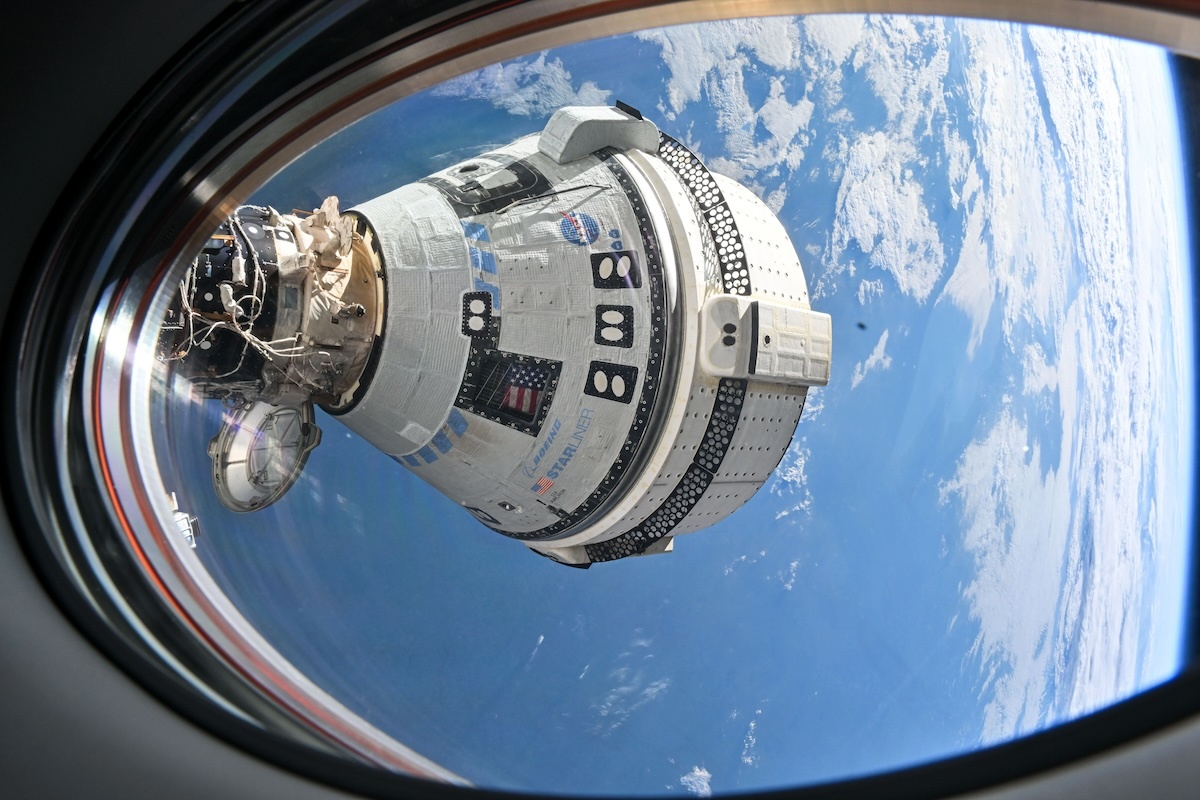
NASA astronauts Butch Wilmore and Suni Williams arrived at the orbiting laboratory on June 6 aboard the Boeing Starliner after lifting off on June 5 from Space Launch Complex-41 at Cape Canaveral Space Force Station in Florida.
During Starliner’s flight to the space station, engineers noticed some of the spacecraft’s thrusters did not perform as expected and several leaks in Starliner’s helium system also were observed. Engineering teams at NASA and Boeing have since conducted several thruster testsand in-depth data reviews to better understand the spacecraft. While engineers work to resolve technical issues before Starliner’s return to Earth, the astronaut duo have been working with the Expedition 71 crew, performing scientific research and maintenance activities.
NASA now plans to conduct two reviews – a Program Control Board and an Agency Flight Readiness Review – before deciding how it will safely return Wilmore and Williams from the station. NASA expects to decide on the path forward by the end of August.
Here are some frequently asked questions about their mission.
About the Mission and Delay
What is NASA’s Boeing Crew Flight Test?
NASA’s Boeing Crew Flight Test launched on June 5, and is the first flight of the Starliner spacecraft to the International Space Station with astronauts. The flight test aims to prove the system is ready for rotational missions to the space station. NASA wants two American spacecraft, in addition to the Roscosmos Soyuz spacecraft, capable of carrying astronauts to help ensure a permanent crew aboard the orbiting complex.
What are the goals of the Crew Flight Test?
This flight test aims to demonstrate Starliner’s ability to execute a six-month rotational mission to the space station. The flight test objectives were developed to support NASA’s certification process and gather the performance data needed to evaluate readiness ahead of long-duration flights.
Why is the Crew Flight Test staying longer than planned aboard the space station?
During Starliner’s flight to the space station, some of the spacecraft’s thrusters did not perform as expected and several leaks in Starliner’s helium system were observed. While the initial mission duration was planned for about a week, there is no rush to bring crew home, so NASA and Boeing are taking additional time to learn about the spacecraft. This is a lesson learned from the space shuttle Columbia accident. Our NASA and Boeing teams are poring over data from additional in-space and ground testing and analysis, providing mission managers data to make the best, safest decision on how and when to return crew home.
If there’s an emergency on the space station, how will Butch and Suni get home?
Starliner remains the primary option for Butch and Suni if an emergency occurs and they need to rapidly depart the station. There is no urgent need to bring them home, and NASA is using the extra time to understand the spacecraft’s technical issues before deciding on a return plan.
How long could Butch and Suni stay on the space station if they don’t come home on Starliner?
If NASA decides to return Starliner uncrewed, Butch and Suni would remain aboard station until late-February 2025. NASA would replan the agency’s SpaceX Crew-9 mission by launching only two crew members instead of four in late September. Butch and Suni would then return to Earth after the regularly scheduled Crew-9 increment early next year.
Are Butch and Suni staying in space until 2025?
No decisions have been made. NASA continues to evaluate all options as it learns more about Starliner’s propulsion system. Butch and Suni may return home aboard Starliner, or they could come back as part of the agency’s SpaceX Crew-9 mission early next year.
Can Starliner fly without astronauts?
Yes, Starliner can undock and deorbit autonomously, if NASA decides to return the spacecraft uncrewed.
Could NASA send a SpaceX Dragon to bring Butch and Suni back?
If NASA decides to return them aboard a SpaceX Dragon, NASA will replan its SpaceX Crew-9 mission by launching only two crew members in late September instead of four. Butch and Suni would then return to Earth after the regularly scheduled Crew-9 increment early next year.
Why does NASA need two crew transportation systems?
The main goal of the agency’s Commercial Crew Program is two, unique human spaceflight systems. Should any one system encounter an issue, NASA still has the capability to launch and return crew to ensure safety and a continuous human presence aboard the International Space Station.
About the Astronauts
Are Butch and Suni stuck on the space station?
No, Butch and Suni are safe aboard the space station working alongside the Expedition 71 crew. They also have been actively involved in Starliner testing and technical meetings. Butch and Suni could return home aboard Starliner if an emergency arises. The agency also has other return options available, if needed, for both contingency and normal returning planning.
Are Suni and Butch prepared for a longer stay on the station?
Butch and Suni each have previously completed two long-duration stays aboard the station. NASA astronauts embark on missions fully aware of the various scenarios that may become reality. This mission is no different, and they understood the possibilities and unknowns of this test flight, including being aboard station longer than planned.
How long would an extended stay for Butch and Suni compare to other space station mission lengths?
A typical stay aboard the International Space Station is about six months, and NASA astronauts also have remained on the space station for longer duration missions. Previous missions have given NASA volumes of data about long-duration spaceflight and its effects on the human body, which the agency applies to any crew mission.
Do the astronauts have what they need (e.g., food, clothing, oxygen, personal items, etc.)?
Yes. The International Space Station is well-stocked with everything the crew needs, including food, water, clothing, and oxygen. Additionally, NASA and its space station partners frequently launch resupply missions to the orbiting complex carrying additional supplies and cargo.
Recently, a Northrop Grumman Cygnus spacecraft carrying 8,200 pounds of food, fuel, supplies, and science and a Progress resupply spacecraft carrying three tons of cargo arrived at the station. NASA has additional SpaceX resupply missions planned through the end of 2024.
What are they doing aboard the space station?
The crew continues to monitor Starliner’s flight systems and gather performance data for system certification. NASA also is taking advantage of Butch and Suni’s extra time aboard the orbital laboratory, where they have completed various science experiments, maintenance tasks, and assisted with spacewalk preparations. Some of the science they’ve recently completed includes new ways to produce fiber optic cables and growing plants aboard the orbiting complex.
Can they talk to their family and friends?
Butch and Suni enjoy many of the same comforts we have here on Earth. They can email, call, and video conference with their family and friends when they have “free time” aboard the International Space Station.
About the Return Plan
What are the other options for bringing Butch and Suni back?
NASA has two unique American space transportation systems capable of carrying crew to and from station. Although no decisions have been made, NASA is considering several options to return Butch and Suni from the space station, including returning aboard Starliner, if cleared, or as part of agency’s SpaceX Crew-9 mission in February 2025.
Is it safer to bring them home aboard a SpaceX Dragon?
Crewed test flights are inherently risky, and although rotation missions may seem routine, they also are not without risk. It is NASA’s job to evaluate that risk and determine whether it is acceptable for crew ahead of each flight.
What other steps is NASA taking to bring them home?
NASA adjusted SpaceX Crew-9 launch and the agency’s SpaceX Crew-8 return, allowing more time to finalize Starliner return plans. NASA also is looking at crew assignments to ensure Butch and Suni can return with Crew-9, if needed.
Quelle: NASA
----
Update: 23.08.2024
.
NASA will decide Saturday if Boeing's new capsule is safe enough to fly 2 astronauts back from space
NASA will decide this weekend whether Boeing's new capsule is safe enough to return two astronauts from the International Space Station, where they've been waiting since June
CAPE CANAVERAL, Fla. -- NASA said Thursday it will decide this weekend whether Boeing’s new capsule is safe enough to return two astronauts from the International Space Station, where they’ve been waiting since June.
Administrator Bill Nelson and other top officials will meet Saturday. An announcement is expected from Houston once the meeting ends.
Astronauts Butch Wilmore and Suni Williams launched aboard Boeing’s Starliner on June 5. The test flight quickly encountered thruster failures and helium leaks so serious that NASA kept the capsule parked at the station as engineers debated what to do.
SpaceX could retrieve the astronauts, but that would keep them up there until next February. They were supposed to return after a week or so at the station.
If NASA decides SpaceX is the way to go, Starliner would return to Earth empty in September.
Engineers are evaluating a new computer model for the Starliner thrusters and how they might perform as the capsule descends out of orbit for a touchdown in the U.S. Western desert. The results, including updated risk analyses, will factor into the final decision, NASA said.
Boeing said earlier this month that extensive testing of thrusters in space and on the ground demonstrated Starliner’s ability to safely return the astronauts.
It was the company's first astronaut flight, delayed for years by a multitude of capsule problems. Two previous Starliner test flights had no one on board.
NASA hired Boeing and SpaceX a decade ago, after the space shuttles retired, to ferry its astronauts to and from the station. SpaceX has been at it since 2020.
Quelle: abcNews
----
Update: 24.08.2024
.
NASA Decides to Bring Starliner Spacecraft Back to Earth Without Crew
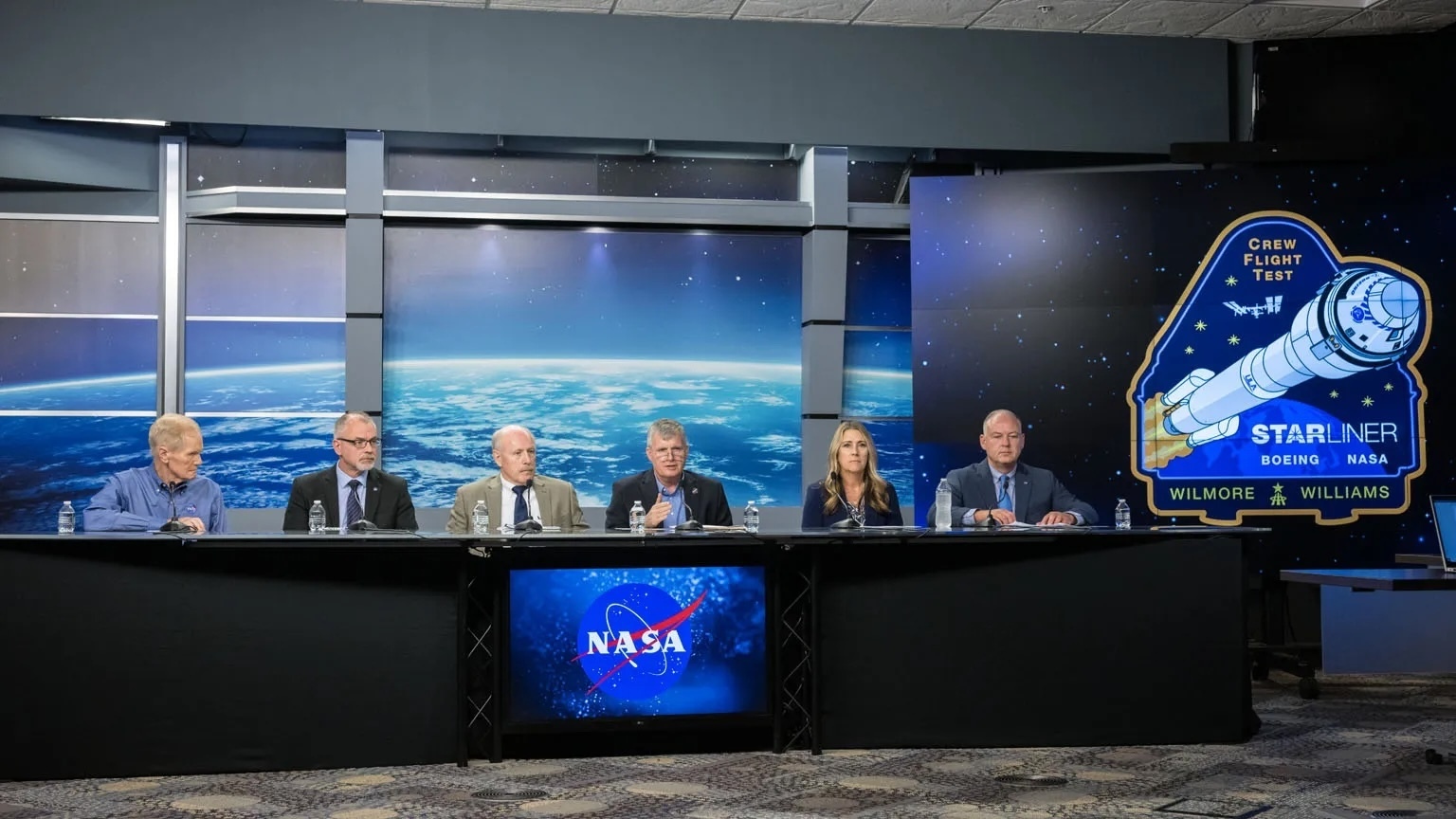
NASA will return Boeing’s Starliner to Earth without astronauts Butch Wilmore and Suni Williams aboard the spacecraft, the agency announced Saturday. The uncrewed return allows NASA and Boeing to continue gathering testing data on Starliner during its upcoming flight home, while also not accepting more risk than necessary for its crew.
Wilmore and Williams, who flew to the International Space Station in June aboard NASA’s Boeing Crew Flight Test, have been busy supporting station research, maintenance, and Starliner system testing and data analysis, among other activities.
“Spaceflight is risky, even at its safest and most routine. A test flight, by nature, is neither safe, nor routine. The decision to keep Butch and Suni aboard the International Space Station and bring Boeing’s Starliner home uncrewed is the result of our commitment to safety: our core value and our North Star,” said NASA Administrator Bill Nelson. “I’m grateful to both the NASA and Boeing teams for all their incredible and detailed work.”
Wilmore and Williams will continue their work formally as part of the Expedition 71/72 crew through February 2025. They will fly home aboard a Dragon spacecraft with two other crew members assigned to the agency’s SpaceX Crew-9 mission. Starliner is expected to depart from the space station and make a safe, controlled autonomous re-entry and landing in early September.
NASA and Boeing identified helium leaks and experienced issues with the spacecraft reaction control thrusters on June 6 as Starliner approached the space station. Since then, engineering teams have completed a significant amount of work, including reviewing a collection of data, conducting flight and ground testing, hosting independent reviews with agency propulsion experts, and developing various return contingency plans. The uncertainty and lack of expert concurrence does not meet the agency’s safety and performance requirements for human spaceflight, thus prompting NASA leadership to move the astronauts to the Crew-9 mission.
“Decisions like this are never easy, but I want to commend our NASA and Boeing teams for their thorough analysis, transparent discussions, and focus on safety during the Crew Flight Test,” said Ken Bowersox, associate administrator for NASA’s Space Operations Mission Directorate. “We’ve learned a lot about the spacecraft during its journey to the station and its docked operations. We also will continue to gather more data about Starliner during the uncrewed return and improve the system for future flights to the space station.”
Starliner is designed to operate autonomously and previously completed two uncrewed flights. NASA and Boeing will work together to adjust end-of-mission planning and Starliner’s systems to set up for the uncrewed return in the coming weeks. Starliner must return to Earth before the Crew-9 mission launches to ensure a docking port is available on station.
“Starliner is a very capable spacecraft and, ultimately, this comes down to needing a higher level of certainty to perform a crewed return,” said Steve Stich, manager of NASA’s Commercial Crew Program. “The NASA and Boeing teams have completed a tremendous amount of testing and analysis, and this flight test is providing critical information on Starliner’s performance in space. Our efforts will help prepare for the uncrewed return and will greatly benefit future corrective actions for the spacecraft.”
NASA’s Commercial Crew Program requires spacecraft fly a crewed test flight to prove the system is ready for regular flights to and from the space station. Following Starliner’s return, the agency will review all mission-related data to inform what additional actions are required to meet NASA’s certification requirements.
The agency’s SpaceX Crew-9 mission, originally slated with four crew members, will launch no earlier than Tuesday, Sept. 24. The agency will share more information about the Crew-9 complement when details are finalized.
NASA and SpaceX currently are working several items before launch, including reconfiguring seats on the Crew-9 Dragon, and adjusting the manifest to carry additional cargo, personal effects, and Dragon-specific spacesuits for Wilmore and Williams. In addition, NASA and SpaceX now will use new facilities at Space Launch Complex-40 at Cape Canaveral Space Force Station in Florida to launch Crew-9, which provides increased operational flexibility around NASA’s planned Europa Clipper launch.
The Crew-9 mission will be the ninth rotational mission to the space station under NASA’s Commercial Crew Program, which works with the American aerospace industry to meet the goal of safe, reliable, and cost-effective transportation to and from the orbital outpost on American-made rockets and spacecraft launching from American soil.
For more than two decades, people have lived and worked continuously aboard the International Space Station, advancing scientific knowledge and demonstrating new technologies, making research breakthroughs not possible on Earth. The station is a critical testbed for NASA to understand and overcome the challenges of long-duration spaceflight and to expand commercial opportunities in low Earth orbit. As commercial companies focus on providing human space transportation services and destinations as part of a robust low Earth orbit economy, NASA’s Artemis campaign is underway at the Moon where the agency is preparing for future human exploration of Mars.
Quelle: NASA
----
Update: 26.08.2024
.
Flawed Boeing mission crew to return to Earth with rival SpaceX
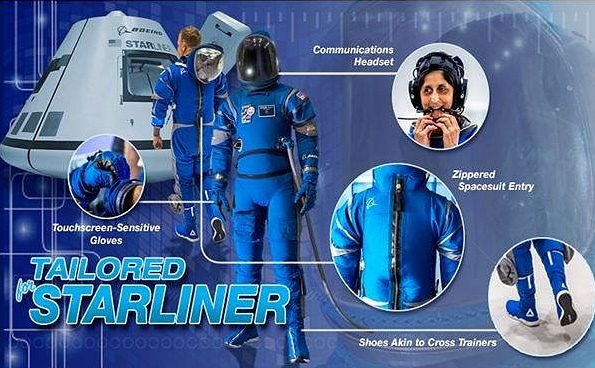
Two US astronauts who arrived at the International Space Station aboard Boeing's Starliner will have to stay six more months and return home with rival SpaceX, NASA said Saturday, in a fresh public relations blow to the crisis-hit aviation giant.
The return of Barry "Butch" Wilmore and Sunita "Suni" Williams had already been delayed for weeks by thruster malfunctions of the Boeing spacecraft, and NASA administrator Bill Nelson announced they will return to Earth in February, while Starliner will return uncrewed.
"Space flight is risky even at its safest and even at its most routine," Nelson told reporters. "A test flight, by nature, is neither safe, nor routine."
He said the decision to keep the astronauts on the ISS and return the Starliner uncrewed "is the result of our commitment to safety," adding, "Our core value is safety."
The new approach will allow the space agency and Boeing to continue gathering data on Starliner during its homeward flight in early September "while also not accepting more risk than necessary for its crew," NASA said in a statement.
SpaceX echoed that phrase in a post by its president, Gwynne Shotwell, on social media platform X.
The development creates yet another headache for Boeing, as the two astronauts will have to spend a total of eight months in orbit, not eight days as originally planned.
Officials have said the astronauts on the ISS have plenty of supplies, and are trained for extended stays.
But Nelson said NASA had not lost confidence in Boeing and plans to continue working with it so the space agency will have two vehicles capable of ferrying astronauts to and from the ISS.
He said he was "100 percent sure Boeing will launch Starliner again with a crew on board."
- Return on hold -
After years of delays, Starliner finally lifted off on June 5 carrying the two veteran astronauts to the ISS.
But a day later, as Starliner was approaching the space station, "NASA and Boeing identified helium leaks and experienced issues with the spacecraft reaction control thrusters," the space agency said.
Amid intense efforts to diagnose the problem and fashion a possible fix, NASA had to put the astronauts' return on indefinite hold.
The big concern was that Starliner might not have the propulsive power to wrest itself out of orbit and begin the descent toward Earth.
NASA officials met with Nelson before their announcement Saturday, finally agreeing on the highly unusual option of bringing the astronauts back from the flying laboratory not on their own craft, but aboard a previously scheduled SpaceX vehicle in February.
"It was just too much risk with the crew," said senior NASA official Steve Stich. Norm Knight, another agency official, added that the astronauts "support the agency's decision fully."
Under the new plan, the SpaceX Crew-9 mission will take off in late September -- after the Starliner has headed earthward, freeing a docking port on the ISS -- but it will carry only two passengers instead of the originally planned four.
NASA and SpaceX are working to reconfigure seats on the Crew-9 Dragon, "and adjusting the manifest to carry additional cargo, personal effects, and Dragon-specific spacesuits for Wilmore and Williams," the space agency said.
The SpaceX vehicle in February will bring back its own crew members plus their two stranded colleagues.
- Boeing vs SpaceX -
The approach represents a further blow to the already tarnished image of US giant Boeing, whose airplane arm has been beset in recent years with concerns about safety and quality control.
Ten years ago, following the retirement of the Space Shuttle, NASA ordered new vessels from both Boeing and SpaceX that could ferry astronauts to and from the ISS.
With two such vehicles available, NASA reasoned, there would always be a backup available.
But Elon Musk's SpaceX beat Boeing to the punch and has been the lone vehicle used to taxi astronauts for the past four years.
This year's crewed Starliner flight, which followed years of delays during the craft's development, was meant to be a last test of the vehicle before it enters regular operations.
Quelle: SD

